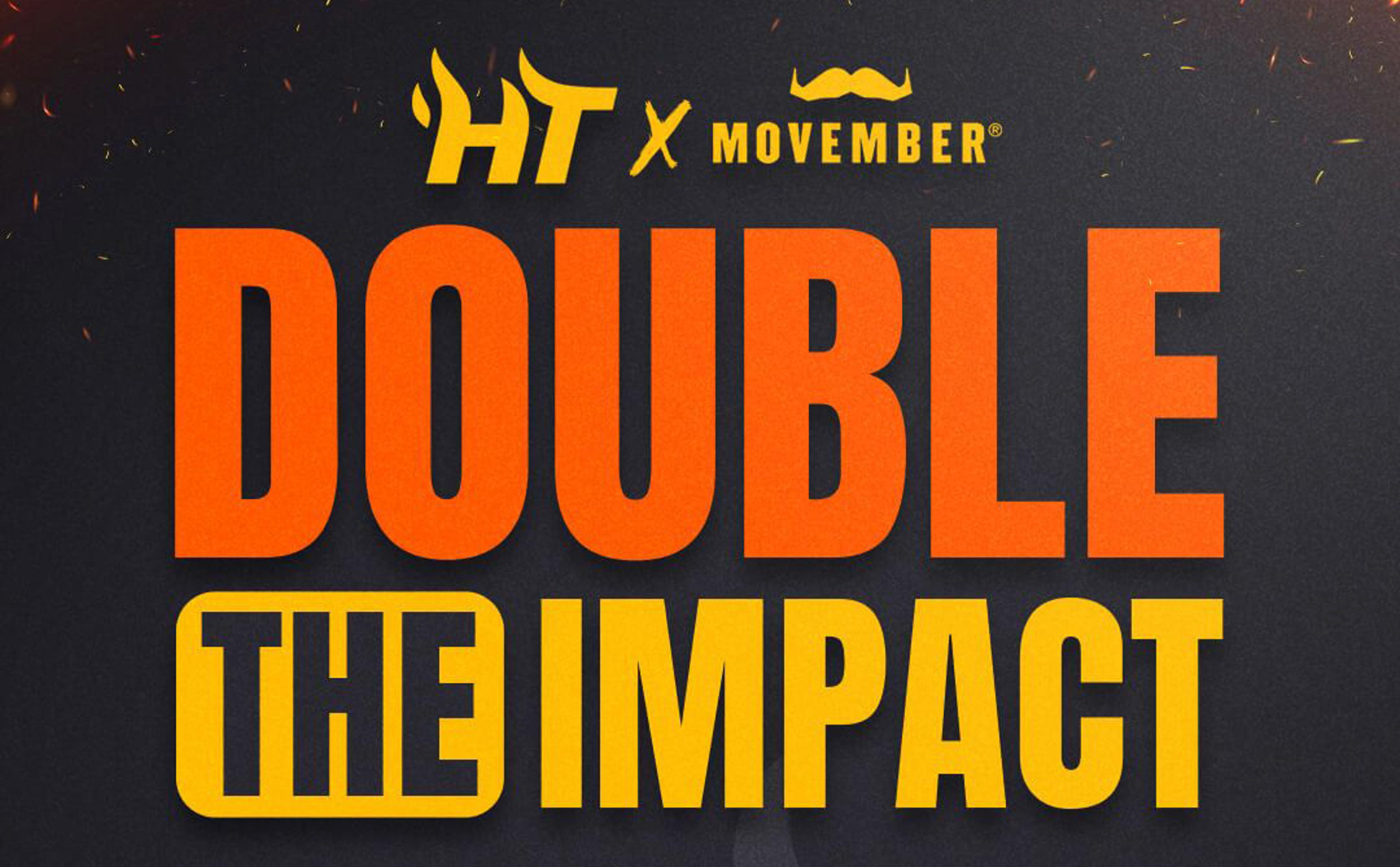Chasing vs Strategic Recovery: Know the Difference Before You're Broke


HotTakes
You're down $600 this week. Your immediate instinct? Double your next bet to get even.
That instinct is precisely what separates long-term winners from people who flame out spectacularly.
Here's the thing: everyone takes losses. Sharp bettors, casual players, professional syndicates—losses are universal in sports betting. The difference isn't whether you lose. It's what happens in the 48 hours after a loss that determines if you're still betting next month.
Most bettors think they're "strategically recovering." They're actually chasing. And the difference between these two approaches isn't just semantic—it's the difference between building a winning process and lighting money on fire.
Let's break down how to tell which one you're doing before your bankroll makes that decision for you.
What Chasing Actually Looks Like (And Why Your Brain Lies to You)
Chasing losses isn't always obvious. You're not necessarily throwing your entire bankroll on a 10-leg parlay (though some of you absolutely are). Chasing shows up in subtle ways that your brain convinces you are "smart adjustments."
The Tells You're Chasing
Bet Sizing Changes After Losses
You normally bet $50 per game. You lose three in a row. Now you're suddenly comfortable betting $150 on the next one "because you're due" or "because this one's a lock."
That's chasing. Your bet size should be determined by your edge and bankroll, not your recent results.
Lowering Your Standards for "Good Bets"
Before the loss, you passed on this game because the value wasn't there. After the loss, you're suddenly finding reasons why it's actually a great spot.
You're not analyzing better. You're rationalizing. Your brain needs action to recover losses, so it manufactures reasons to bet.
The "I Need to Win Today" Mentality
This is the most dangerous tell. When your betting decisions are driven by a timeline ("I need to get even before my partner sees the account" or "I need to win this back before Monday"), you've crossed into full chase mode.
Strategic recovery doesn't have deadlines. Chasing always does.
Betting Outside Your Normal Sports or Markets
You typically bet NFL. You're down $400. Suddenly you're betting Turkish basketball at 3am because the payout looks good.
When losses push you into unfamiliar territory where you have no edge, that's not expanding your portfolio—that's desperation.
The Psychological Trap That Hooks Everyone
Your brain is working against you here, and it's using some sophisticated tricks:
Loss Aversion on Steroids
Research shows people feel losses about twice as intensely as equivalent gains. So that $200 loss feels like a $400 gut punch. Your brain becomes irrationally focused on eliminating that pain immediately, which overrides your logical betting process.
The Sunk Cost Fallacy
"I'm already down $500, so I might as well risk another $200 trying to get it back."
This is textbook sunk cost fallacy. That $500 is gone. It should have zero influence on your next betting decision. But your brain treats it like an investment that needs to be recovered, leading you to throw good money after bad.
Temporal Discounting
Your brain values immediate relief over long-term success. Strategic recovery takes weeks. Chasing promises results tonight. Even though chasing has a 90% chance of making things worse, your brain prefers the immediate possibility over the delayed certainty.
This isn't a character flaw. This is human psychology. Sharp bettors aren't immune to these feelings—they just have systems that prevent feelings from driving decisions.
What Strategic Recovery Actually Involves
Strategic recovery isn't exciting. It doesn't feel like "taking control." It feels like eating vegetables when you want pizza. But it's the only approach that actually works.
The Core Principles of Strategic Recovery
Principle 1: Your Bet Size Goes Down, Not Up
This is counterintuitive and uncomfortable. You're down $500. Your brain screams to increase bet sizes to recover faster. Strategic recovery does the opposite.
If you were betting 3% of your bankroll before the loss, you're still betting 3% after—which is now a smaller dollar amount because your bankroll is smaller. This protects you from compound losses and gives you more shots to recover.
Math example: Start with $2,000 bankroll, 3% unit size ($60). Lose $500. New bankroll: $1,500. New unit size: $45.
Chasing would increase to $100+ per bet to recover faster. Strategic recovery drops to $45 to survive longer.
Principle 2: Your Process Doesn't Change
The criteria you use to identify good bets should be identical whether you're up or down. If you normally need three confirming factors to place a bet, you still need three after a loss.
Strategic recovery means sticking to your standards even when they feel too restrictive. Especially when they feel too restrictive.
Principle 3: Timeline Flexibility Is Mandatory
You cannot put a deadline on recovery. The moment you say "I need to win this back by Friday," you've crossed into chasing territory.
Strategic recovery accepts that getting back to even might take 50 bets over six weeks. Chasing demands it happens in the next three bets before kickoff.
Principle 4: You Track Everything (Even When You Don't Want To)
Strategic recovery requires brutal honesty about your performance. That means tracking every bet, every outcome, every decision.
Chasers avoid tracking because the data would force them to confront uncomfortable truths. Strategic recoverers lean into the data because it's the only way to identify and fix leaks.
The Strategic Recovery Framework in Action
Here's what strategic recovery looks like in practice:
Week 1: Down $400
Acknowledge the loss without emotional response
Review what went wrong (bad luck vs bad process)
Maintain or reduce unit size
Continue normal betting schedule
Track everything meticulously
Week 2: Down $200 (recovering)
Resist urge to increase bets because you're "hot again"
Maintain same unit size and standards
Review recent bets for process improvements
Celebrate the trend without assuming it continues
Week 3: Even
Don't immediately increase unit size
Evaluate if recovery came from skill or variance
Update your process based on what worked
Reset mentally for next cycle
The timeline doesn't matter. The process does.
The Early Warning System: Catch Yourself Before It's Too Late
Most bettors don't realize they're chasing until they've already done serious damage. Here's your early warning system—if you recognize these patterns, pump the brakes immediately:
Red Flag #1: You're Justifying Bets You'd Normally Pass
"I don't usually bet college basketball, but this line seems off..."
Stop. If you wouldn't bet it when you're up, don't bet it when you're down. That's your brain manufacturing action to chase losses.
Red Flag #2: You're Betting Faster Than Normal
Your usual process: research Tuesday, place bets Wednesday, lock in Thursday.
After losses: seeing line, placing bet, thinking about it later.
Speed is a massive tell. Strategic recovery maintains your normal pace. Chasing accelerates because your brain craves immediate relief.
Red Flag #3: You're Hiding Bets or Avoiding Accountability
If you're not telling your betting buddy about this one, or you're avoiding logging it in your tracking sheet, that's your subconscious telling you this is a chase bet.
Strategic recovery is transparent. Chasing happens in the shadows.
Red Flag #4: You're Making "Just This Once" Exceptions
"I normally stick to 3% units, but just this once I'll go 8% because I'm really confident."
Every exception when you're down is a chase. Full stop. If the bet is good enough for 8%, it should be 8% when you're up too. If you wouldn't do it then, you're chasing now.
Red Flag #5: You're Betting Emotionally Significant Games
Your team just lost. You're pissed. Now you're betting against them next week to "make them pay you back."
Or you're betting on them because "they owe me for that last game."
If emotion is driving the bet, it's chasing. Strategic recovery is emotionally neutral.
Why Strategic Recovery Is Actually the Winning Edge
Here's what nobody tells you: sharp bettors don't beat the market just by finding better picks. They beat it by surviving bad runs that destroy everyone else.
Sports betting isn't about never losing. It's about still being in the game after you inevitably hit a losing streak. Strategic recovery is what keeps you alive during those streaks.
The math is simple: if you lose 50% of your bankroll chasing, you need a 100% return to get even. That's mathematically brutal. Strategic recovery protects your bankroll so the recovery path stays achievable.
The Long-Term Edge of Discipline
Let's compare two bettors over 100 bets:
Bettor A (Chaser):
Hits a 10-bet losing streak
Increases bet sizes to chase
Loses 60% of bankroll
Reduces bet sizes out of necessity
Takes 150 bets to recover
Final result: Back to even after 250 total bets
Bettor B (Strategic Recovery):
Hits same 10-bet losing streak
Maintains or reduces bet sizes
Loses 25% of bankroll
Stays disciplined through recovery
Takes 40 bets to recover
Final result: Back to even after 140 total bets
Same initial losing streak. Completely different outcomes. The difference isn't betting skill—it's loss management.
For more on why chasing mathematically destroys your bankroll, check out our breakdown in The Math Behind Why 'One Big Win' Will Never Save You.
The Practical Implementation: Your 72-Hour Protocol
After any significant loss (define "significant" for your bankroll—maybe 20% or more), implement this 72-hour protocol:
Hour 0-24: Acknowledge and Analyze
What you do:
Log the loss in your tracking system
Write a brief analysis: bad luck or bad process?
Identify specific factors that contributed
Assess current emotional state honestly
What you DON'T do:
Place any bets
Research potential revenge bets
Calculate how quickly you can get even
Tell yourself stories about being "due"
Hour 24-48: Recalibrate and Reset
What you do:
Review your betting standards and criteria
Recalculate appropriate unit sizes for new bankroll
Identify upcoming opportunities that meet your criteria
Discuss the loss with accountability partner if you have one
What you DON'T do:
Lower your betting standards to find more opportunities
Increase unit sizes to accelerate recovery
Bet outside your usual markets or expertise
Make "exception" bets that violate your normal rules
Hour 48-72: Return to Process
What you do:
Resume normal betting schedule with recalibrated units
Apply same rigorous standards you'd use if up money
Track everything with additional attention to detail
Check in with yourself: am I following process or chasing?
What you DON'T do:
Convince yourself the 72 hours was enough if it wasn't
Rush back into action just to feel productive
Bet with any timeline for recovery in mind
Skip any steps of your normal process
This protocol creates distance between loss and response. That distance is where strategic recovery lives.
The Uncomfortable Truth About Recovery Timelines
Most bettors want to know: "How long should recovery take?"
The honest answer: as long as it takes.
But here's a realistic framework based on drawdown size:
Down 10-15% of bankroll:
Strategic timeline: 2-4 weeks
Required: Disciplined unit sizing, normal process
Success rate: High if you maintain standards
Down 25-35% of bankroll:
Strategic timeline: 1-2 months
Required: Reduced unit sizes, stricter bet selection
Success rate: Moderate with strong discipline
Down 50%+ of bankroll:
Strategic timeline: 3-6 months or longer
Required: Major unit reduction, possible bankroll reset
Success rate: Difficult but achievable
Reality check: Consider if current bankroll is still viable
The key insight: These timelines assume you maintain the exact same process that got you to even before the losses. The second you start chasing, the timeline extends indefinitely.
Bottom Line: Choose Your Poison Carefully
Every bettor faces this choice after losses. The choice isn't whether to try recovering—it's which method you'll use.
Chasing offers:
Immediate action
The feeling of "doing something"
The possibility of quick recovery
A 90% chance of making things worse
A path to being broke
Strategic recovery offers:
Delayed gratification
The discomfort of patience
Slow, methodical progress
A realistic path back to even
Long-term survival and success
Your brain will push you toward chasing. That's normal. Sharp bettors feel the same impulse. They just have systems that prevent impulses from becoming actions.
The difference between bettors who survive bad runs and those who flame out isn't talent. It's not luck. It's whether they can distinguish between chasing and strategic recovery—and more importantly, whether they can force themselves to choose the strategic path even when every instinct screams for revenge.
The math doesn't care about your feelings. Your bankroll doesn't care about your timeline. The market doesn't care that you're down.
But strategic recovery? That actually cares about getting you back to even. Chasing just cares about making you feel better right now.
Ready to Build Real Discipline?
The HotTakes community helps you track your actual performance, spot chasing patterns before they destroy your bankroll, and connect with bettors who've been where you are now.
Download the app to set up bet tracking, get alerts when you're deviating from your process, and see what strategic recovery actually looks like in practice.
Sometimes the most profitable bet is the one that keeps you alive for tomorrow's edge.
Download HotTakes Now
Need to talk to someone about gambling concerns?
National Problem Gambling Helpline: 1-800-522-4700 (free, confidential, 24/7)

